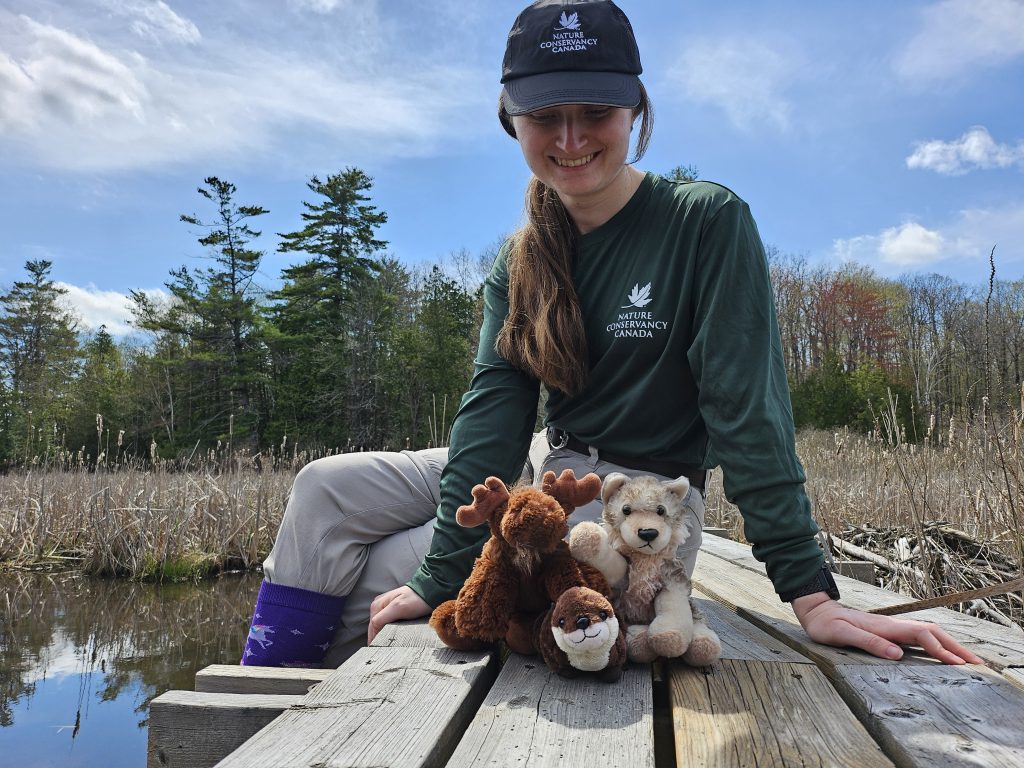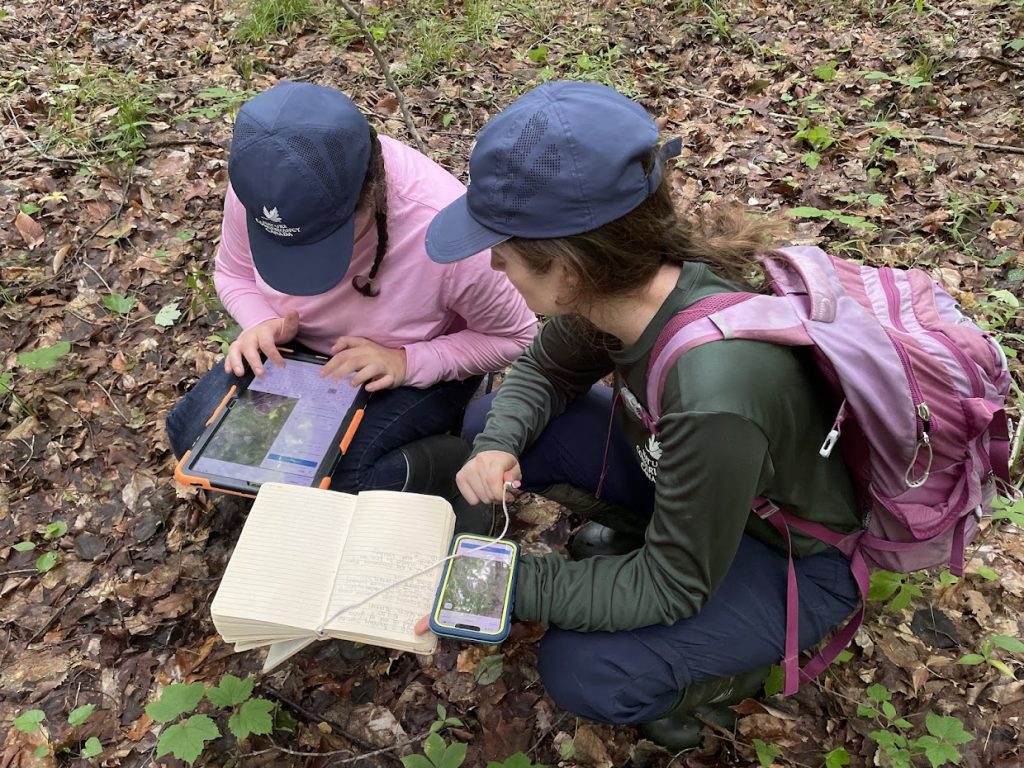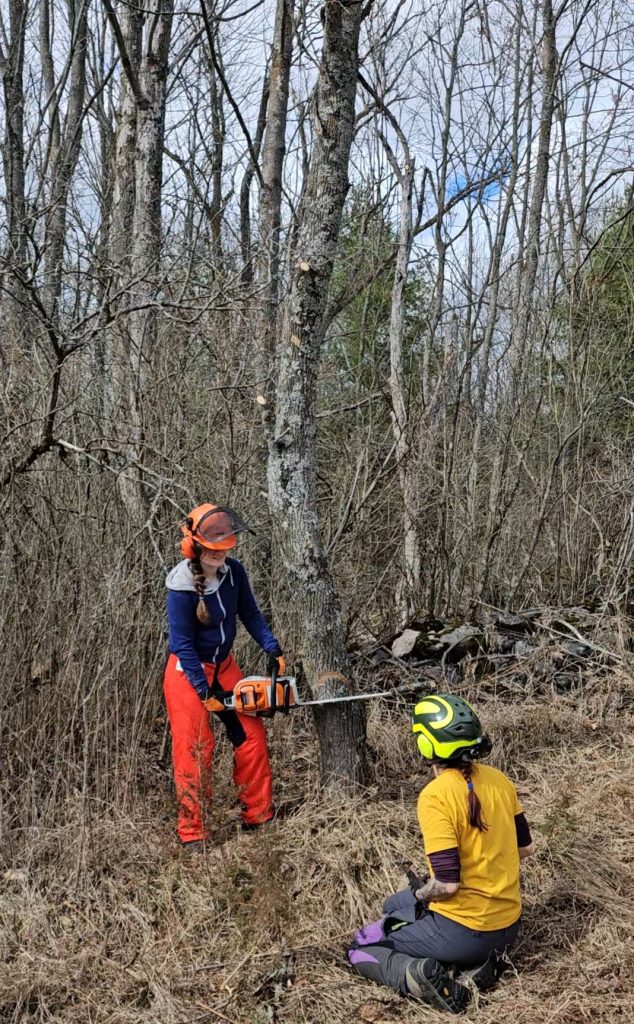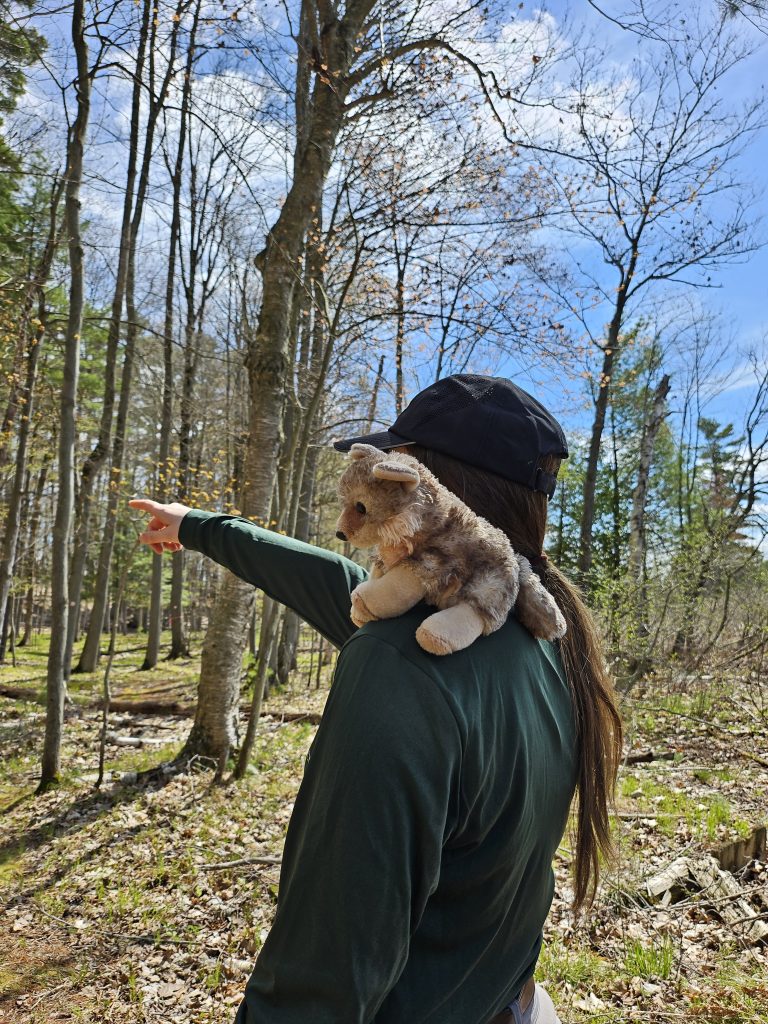
Did you adopt a moose, river otter, or Eastern wolf this past year? You’re not alone! Kids across Canada adopted a whopping 674 of these animals in 2023 and 2024 — that’s almost 700!
I’m Megan Quinn, a conservation biologist at the Nature Conservancy of Canada. I’m so grateful to everyone who has adopted a Northern river otter, a moose, or an Eastern wolf. Proceeds from these adoptions help me do really important work in Eastern Ontario to protect these species and their habitats. By following along with my journey in the field, you are helping to highlight how critical this work is.
You have also given me a lot of hope! When I was growing up, I didn’t have access to any nature, so I didn’t know how important conservation was. I have always loved animals, and wanted to help them, but I didn’t know how. By being an Earth Ranger, you are already way ahead of where I was, so I can’t wait to see where you’ll go!
I’ve appreciated all the great questions you’ve asked, and the curiosity you’ve shown. Even if I didn’t get to answer your question in a video, I read every single one, and they’ve inspired me to keep going in my work.
My job isn’t always easy! It can be physically exhausting, hot, uncomfortable, and full of biting insects, but knowing that you all care about these species as much as I do inspires me to keep going! Thank you for letting me share my work with the Nature Conservancy of Canada and my world with you.
I’m so excited to tell you about everything my team accomplished this past year — all thanks to you!

Springtime in the Forest
Spring is one of my favourite times to be a conservation biologist. The early spring flowers are starting to appear, and the forest floor is covered in white, purple, and yellow as the Bloodroot, Spring Beauties, and Trout Lily flowers appear. The animals also arrive too, whether they’re coming out of hibernation or returning from their migration routes. Suddenly, the forests and wetlands of Eastern Ontario start to feel alive.
Spring is also when our new conservation technicians start their work. If you want a job where you get to protect the earth every day, you might want to work with the Nature Conservancy of Canada as a conservation technician one day! It’s a great way to learn about the animals and plants that live in these unique ecosystems.
Fun fact: being a conservation technician was my first environmental job when I graduated from college. I love teaching our technicians how to do surveys, identify species, and navigate around the forests and wetlands For many technicians, this is their first environmental job, so they are eager to get started.
Our conservation technician Rishona filmed these Northern river otters playing — right outside of our office! It’s always such a joy to see them having fun! By protecting their habitat, and working to restore it, the Nature Conservancy of Canada makes sure these otters will have safe places to live and play for generation to come.
On the Trail

My team and I have been doing a lot of trail maintenance this year! Many Nature Conservancy of Canada properties have trails where you can go for a hike. This lets you experience these wonderful areas without damaging them or stressing out the wildlife that live there.
This year, I learned how to do something new: use a chainsaw!
In March, I took special training to learn how to use a chainsaw safely. When I first became a conservation biologist, I had no idea that it would involve using a chainsaw. But this job has taught me to use all sorts of tools and think creatively.
I had never used a chainsaw before, and at first, I was quite scared. It’s a heavy piece of equipment, and you can hurt yourself if you don’t use it properly. But just like any challenge, if you have the right guidance and attitude, you can overcome your fear. I’m really proud that I can now safely use a chainsaw to keep our forests in Eastern Ontario healthy and accessible for everyone.
When trees fall down across trails, it makes it difficult for people to hike. That’s why we use chainsaws to cut a path. It’s always really sad when a tree falls down. But luckily, even though the tree isn’t growing anymore, it still has a really important role to play in the ecosystem. As the tree starts to decompose, it puts nutrients back into the soil. These nutrients help the next generation of trees grow. The trunk of the tree also becomes great habitat for birds, insects, and small mammals. In order for new trees to grow, they need sunlight. A tree falling down opens up the canopy for more sunlight to get in, which means more trees can grow.

Teamwork Makes the Dream Work
Another task I enjoy is working with our partners. I work across a really big area in Eastern Ontario, so I need to talk to a lot of people to make sure the work gets done.
In January, I went to a big meeting to talk about phragmites. Phragmites are an invasive grass species that takes over our wetlands. and makes it hard for species like the Northern river otter and the moose to find food and habitat. We have been removing phragmites for many years in Eastern Ontario. By working together with our friends and neighbours, we can clear more of it, and we can make sure everyone knows the correct way to remove it. Invasive species removal works a lot better when you work as a team!
In April, with the help of our friends and neighbours, we removed six huge garbage bags of invasive species that had escaped from people’s gardens onto one of our properties. If I tried to do that by myself, it would take days! But because we had 12 people, it only took a few hours.
Over the last few months, I’ve also been talking to a lot of people in the community about the work the Nature Conservancy of Canada does. I’ve given presentations to students at Arnprior High School and Queen’s University. I even took student volunteers from the Canadian Wildlife Federation on a guided snowshoe hike to talk about how to identify trees when they don’t have any leaves. You also may have seen me in your school, talking about Northern river otters! It’s important to talk about these species. That way, people who don’t work with them every day, like I do, will know how important they are, and how to protect them.

Working with Animals When You Grow Up
If you want to work outside and protect species like the Northern river Otter, the moose, and the Eastern wolf, you can be a conservation biologist too!
My first piece of advice would be to keep asking questions. Being curious about the environment is really important, because the more questions you ask, the more you’ll learn. I encourage you to learn about the species and habitats that are in your community. You can do this whether you live in a big city, a small town, or a rural area. Using apps like Seek or iNaturalist on your phone will help you to learn more about what you see outside.
The Nature Conservancy of Canada has properties across the country, and you can visit many of them to go hiking. You could ask your parents to volunteer at one of our Conservation Volunteer events. This is a great way to meet your local conservation biologist, do something good for the planet, and learn about the nature where you live. All of this will give you a head-start to being a conservation technician with the Nature Conservancy of Canada, and one day, a conservation biologist like me.
But you don’t need to wait to grow up to make a difference! There are things you can do right now to help the planet, like planting a native flower garden, raising awareness in your school, and continuing to be an Earth Ranger.


I would love to get a river otter soon. So cute
wow
I don’t have one
I adopted an eastern wolf! If I ever adopt another I’d adopt an otter! It was hard to decide between them!
Looks sooo cool I love it
I do not have any of those